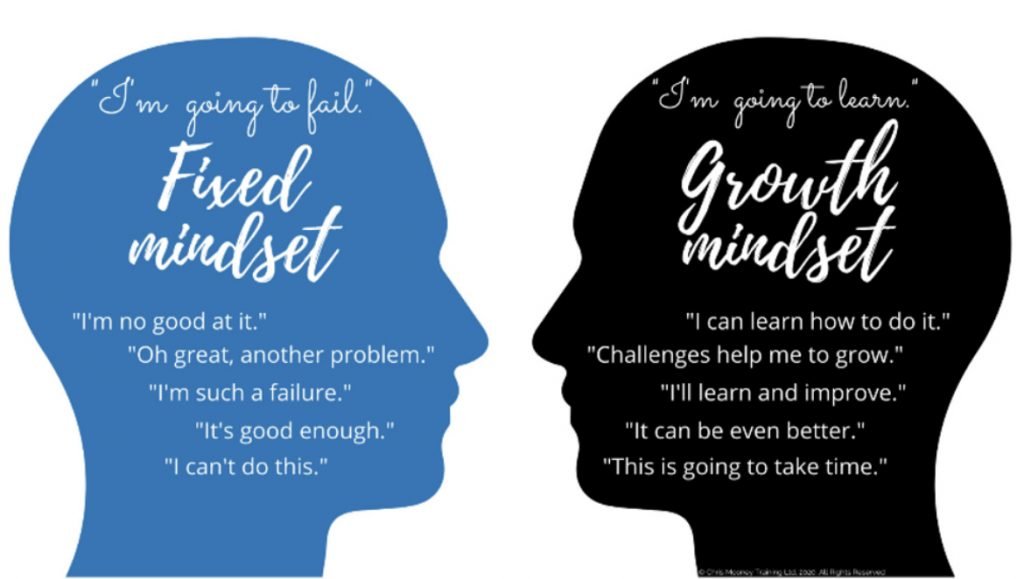Imposter syndrome is a psychological pattern where we doubt our skills, talents and accomplishments and have a nagging fear that we are going to be exposed as a fraud.
In other words, we can have all the qualifications, accreditations, certifications and rubber stamps validating our knowledge and skills. Yet, we live in constant fear and doubt that this time, they’re finally going to find out just how bad we are!
Already sounds pretty ridiculous, doesn’t it?
But imposter syndrome is a real phenomenon and thankfully, one that more and more of us are talking about. There was a time not that long ago, when we worried that we were alone with these thoughts, feelings and emotions.
There is another way when it comes to tackling imposter syndrome, and it all starts with – to coin a phrase from Brené Brown – the three pound weirdo that we carry around in our skull!
Unbeknownst to us most of the time, it’s working SO hard to keep us safe and away from pain and danger, constantly analysing our surroundings and environment for threats.
Most of us know that by now, though what we know less about – and certainly what we do less about – are the damaging effects that it can lead to which allows our imposter syndrome to take over.
1. Work on your negative thoughts
In a world of chaos, with everything feeling so out of control, the one thing we do have complete control and choice over is our thinking. Susan Jeffers wrote in ‘Feel the Fear and Do It Anyway’:
It is reported that over 90% of what we worry about never happens. That means that our negative worries have less than a 10% chance of being correct.
Now, I don’t know where Susan Jeffers sourced those stats, but doesn’t it ring true? We spend so much time worrying about what might happen. What we fail to do is look back to realise just how many times the bad thing didn’t happen.
Making a conscious choice to switch off our internal auto-pilot and control negative thinking can make a huge difference in tackling imposter syndrome. It’s not a ‘one and done’ piece of work; rather a constant area of focus where it becomes easier to:
- Identify and stop the negative thought, and then
- Replace it with a more positive, constructive or rational outlook

2. Positive self-talk
Hands-up if you are your own worst critic? 🙋🏻♂️ We talk to ourselves in a way that we wouldn’t dream of talking to even our worst enemy, never mind our best friend.
When it comes to tackling imposter syndrome, the words we tell ourselves – both out loud and in our head – have a huge influence in both where we put our focus and what we choose to believe is true.
Our body hears what our mind says. We get what we focus on and there is an intrinsic link in how damaging or nurturing our inner self-talk is and the self-perceived confidence that it contributes towards.
3. Grow a growth mindset
If you are more of the opinion that ‘you can’t teach an old dog new tricks’, you might want to focus on how developing your mindset could help you in tackling imposter syndrome.
Most people know that with a fixed mindset we believe that our natural talents, skills and abilities cannot be developed. Whereas with a growth mindset, we believe the opposite is true; that we can develop and evolve over time.
But it goes much deeper than that.
The other fundamental aside from this belief, is where we are putting our focus. Are we overly focused on what others think of us, or do we accept that we’re a work in progress and it’s okay to show these imperfections to others?



Then, it comes down to four essential elements that further help us to develop a growth mindset in terms of how we…
- …deal with making mistakes.
- …respond when we have to put in effort.
- …react to challenges.
- …receive feedback.
Our mindset always veers somewhere on the fixed Vs. Growth continuum, rather than always having one or the other. Where is yours right now and how could you develop more of a growth mindset?
4. Listen to your physiology
The control centre in our skull constantly sends signals to the rest of our body that all too often, we suppress or fail to notice.
For good reason: sticking our head in the sand is a common and valid enough short-term coping mechanism. It gets us through tough times, and let’s face it, we want to appear strong, confident and capable to those around us. Of course we all know that it can become damaging in the long-term, yet we plough on without making any real changes.
Listen to the little signals your brain sends you, because they are trying to help you in tackling imposter syndrome. Whether it’s to alert you to perceived danger or threat, becoming conscious of these signals wakes us up so that we can then apply logic to those often illogical thoughts and feelings that our imposter presents us with.
5. Embrace your 'flawsomeness'
When it comes to tackling imposter syndrome, a hugely damaging factor can be the self-imposed pressure that we put on ourselves to be perfect.
If you were to rank only your skills into a top ten list, you would have a number 1 and a number 10. You would, and we all would.
Rather than chase some unrealistic and elusive version of perfection, wouldn’t it be much easier to accept that we all have flaws?



People respond to authenticity and vulnerability. Help your imposter syndrome by both leveraging what you are brilliant at and being honest with yourself and others about where you are still developing in equal measures.
Own your flaws and your flawsomeness.
6. Remember the wins
Our brain has done a pretty good job of keeping us alive this long, largely because it works so hard in the background to steer us away from pain.
This is great keeping us safe and we need to listen to these warnings, though when it comes to tackling imposter syndrome, the damaging side effect is that we subconsciously go to the negative.
Just think about how easy it is to recall all of the times that you’ve stuffed up or made a huge mistake. Now, compare that to the last time you did something brilliantly.
Harder to think of that one, right?
Have that logical argument with your illogical brain. It’s simply trying to tell you “HEY! Remember that time you failed / got it all wrong / messed up? You don’t want to feel that pain again, do you?”
Remembering the wins slowly and surely builds up confidence over time and makes it easier to switch off that internal auto-pilot to develop a new habit of going to the positive, rather than the negative.
7. Rewrite your story



Bringing it full circle, once we begin to consciously practise these habits, it becomes so much easier to rewrite the story.
We get that choice to thank our imposter syndrome for trying to keep us safe and of making us aware of the impending danger.
Rewriting your story might sound something like…
“Thank you for trying to keep me safe, but there is no reason for me to believe that’s going to happen. It hasn’t happened before and even if it did, I would learn from it for this time. In fact, it’s always gone brilliantly before, so why wouldn’t it go just as brilliantly this time?…”
By acknowledging it in this way, we are listening to those little signals in our physiology and addressing them. We are making a conscious decision not to listen to the imposter by remembering either all the times when the world didn’t end, or when we did brilliantly.








